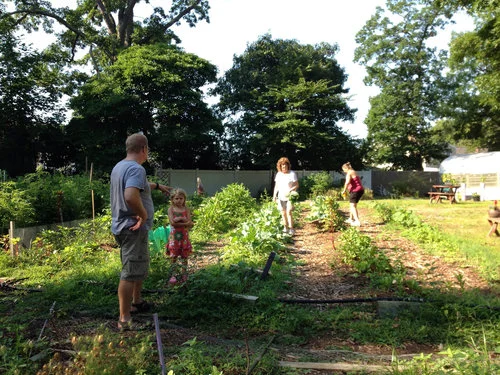Indigenous North Americans & "Harvest"
Gratitude and harvest rituals permeate North America's Indigenous cultures. Here is a small collection of related resources.
##
THE NATIVE AMERICAN HARVEST GATHERING
By Jamie K. Oxendine, Lumbee/Creek
Director, Black Swamp InterTribal Foundation
(Editor, PowWows.com)
Long before White Contact to the “New World” the Native Americans had many kinds of celebrations for the four seasons. One of the most celebrated for the Eastern Woodland Culture was that of Harvest Time. This festival was mainly indigenous to the Eastern Woodlands because of their strong agricultural base. Of course these celebrations took place in Autumn but their actual time varied from place to place and was mainly dependent on the window of harvest time before the last hard killing frost.
In the North East and Great Lakes the Harvest Time began in what is now late August and lasted up to October and November. In the South East the Harvest Time began in August and could last into December.
This was a glorious time of harvesting and gathering such things as:
Acorns, Beans, BirchBark, Blackberries, Blueberries, Cattails, Corn, Cotton, Cranberries, Fish, Grapes, Honey, Meats, Milkweed, Mints, Pawpaws, Peas, Pecans, Peppers, Persimmons, Pond Grass, Popcorn, Potatoes, Pumpkins, Sassafras, Squash, Sunflowers, Sweet Potatoes, Tomatoes, Walnuts, Wild Rice, AND MORE!
And yes many of the “food stuffs” in this list are actually indigenous to the New World and only grew in the New World. Many were taken back to Europe, Asia and Africa by the White Man after contact and over time became staples for those Continents.
As much food as possible was sun dried and smoked dried and hung in lodges as well as buried in food stores for the coming long winter.
These times also included work on villages and homes getting them prepared for the coming winter. This was the perfect time to do any repair work on wigwams and longhouses. The last bit of warm weather was a good time to collect any samplings still full of tree sap that could be very pliable for repairing sections of lodges and for bending to shape for future use. Pond grass, cattails and bark was heavily harvested and stored in lodges to be worked on during the cold winter months. Cattails, plant down, feather down and moss were collected for insulation in both lodges and clothing.
During the height of harvesting and gathering there would be great celebrations of thanks with music, song, dance, gifting and feasting. The general celebrations varied but often lasted anywhere from 4 to 7 days and maybe even longer. The rest of the time was used working hard and long to prepare for the coming winter.
Afterwards, the people of the North East and Great Lakes drew in for a long hard and often bitter winter. Only the Tribes in the South East had more celebrations that coincided with the warmer climate. They could count on certain food stuffs and other needed natural materials to still be collectable throughout the winter months with their milder winter.
##
Select articles:
- Native American Harvest Feasts Before Thanksgiving - Owlcation
- Harvest Like Our Ancestors: The Resistance is Fertile - Indian Country Today
- Tribes Revive Indigenous Crops and the Traditions That Go With Them - NPR
- 10 Indigenous Foods Thought to Be European - Indian Country Today
- Harvest Time: Celebrating Native American Heritage and Traditional Foods - USDA
- The Hunting of the Great Bear - Native Languages
- Tlingits Practice A Dance of Gratitude for Fishing - YouTube
- Native American Harvest Festival Activities, Ages 2 to 11 - Classroom.com
- Zuni Harvest Music and Culture Lessons - Folkways
- Indigenous Principles of Wild Harvest and Management: An Ojibway Community as Case Study - doi: 10.1007/s10745-013-9568-x
- "The harvesting, preparing and eating of foods often involved ritual and ceremony. In general, plants and animals—particularly those which were important as resources—were viewed with respect and gratitude." Traditional Foods of Canadian Indigenous People - FAO
###






